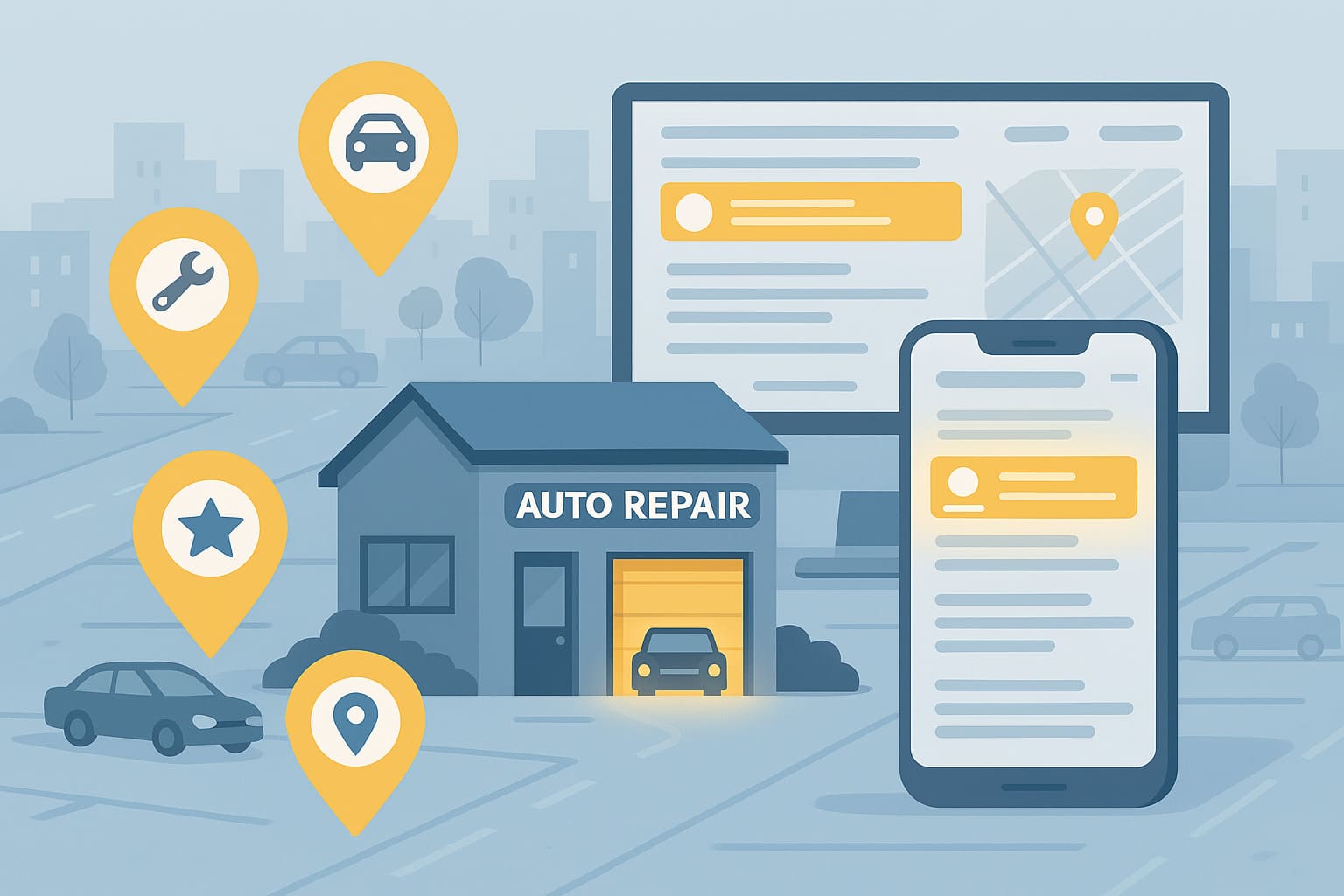In the ever-evolving digital world, Google’s Core Web Vitals have emerged as crucial benchmarks in determining a website’s Page Experience score. Not optimizing your site for these metrics could harm your Search Engine Optimization (SEO) and overall User Experience (UX).
Understanding Core Web Vitals & how to improve them empowers you to take deliberate steps for enhancement. This proactive approach ensures a smooth user experience and aligns with Google’s standards, potentially boosting your search engine visibility.
But how you can improve your scores? However, Core Web Vitals can be complex and challenging to assess, often requiring an in-depth technical understanding. To help you out, we have compiled 8 ways that will help you raise the Core Web Vitals rankings. So, what to wait for? Read on to learn more!
What are Core Web Vitals?
Core Web Vitals are specific factors that Google considers important in a webpage’s overall user experience. They are part of Google’s Page Experience signals, which measure how users perceive the experience of interacting with a web page beyond its pure information value.
There are three main Core Web Vitals:
- Largest Contentful Paint (LCP): This measures loading performance. To provide a good user experience, LCP should occur within 2.5 seconds of when the page first starts loading.
- First Input Delay (FID): This measures interactivity. To provide a good user experience, pages should have an FID of less than 100 milliseconds.
- Cumulative Layout Shift (CLS): This measures visual stability. To provide a good user experience, pages should maintain a CLS of less than 0.1.
These vitals are designed to help you measure and improve your webpages’ loading performance, interactivity, and visual stability.
Why are Core Web Vitals Important?
Google now considers Core Web Vitals a significant part of its Page Experience signals. This means that having low scores on the vitals can affect your website’s visibility in search engine rankings and overall user experience. Here are reasons Core Web Vitals should be a priority for your website:
- User Experience: Core Web Vitals directly measure the quality of the user experience on a webpage. They help ensure that your site is fast, responsive, and visually stable, providing a better experience for your visitors.
- SEO Rankings: Google has incorporated Core Web Vitals into its ranking algorithm. This means that websites with good Core Web Vitals scores may rank higher in search engine results pages (SERPs), increasing visibility and traffic.
- Conversion Rates: A positive user experience, facilitated by good Core Web Vitals scores, can lead to higher conversion rates. Users are more likely to engage with a site that loads quickly, responds promptly to interactions, and doesn’t shift layout unexpectedly.
- Competitive Edge: Optimizing for Core Web Vitals can give you a competitive edge as more businesses become aware of these metrics. Sites that prioritize these metrics may outperform those that do not.
- Future-Proofing: Google continues to emphasize page experience as a ranking factor. By focusing on Core Web Vitals now, you can future-proof your site against further algorithm updates.
- Performance Analysis: Core Web Vitals provide a good indication of how your website is performing. This helps you identify and address any performance issues and ensure users have the best experience possible.
Best Ways To Improve Your Core Web Vitals Scores
Improving your Core Web Vitals scores may require combining technical and creative changes. Google has provided tools and resources to help you optimize your website’s performance. Here are some common ways that can help you improve your Core Web Vitals scores:

Use Content Delivery Network
Using a Content Delivery Network (CDN) can improve your Core Web Vitals performance. CDNs distribute images, audio, video, and other static content across multiple servers worldwide. This results in faster access times and improved website performance. To do this:
- Find a reliable CDN provider that offers quality service in your area.
- Research and compare different plans to decide which one best suits your needs.
- Sign up for the plan and configure it on your website.
- Make sure you’re using the appropriate caching settings for your website.
However, some third-party plugins can help you set up a CDN on your website. Also, manually setting up a CDN can be complex, so it’s best to seek the assistance of an experienced web developer if you need help.
Reduce JavaScript Execution:
JavaScript is a powerful programming language used to create interactive websites. However, too much JavaScript can cause your website to slow down, which can affect your Core Web Vitals score negatively. To reduce JavaScript execution time:
- Minimize the number of files being loaded on your web pages.
- Optimize your code by using efficient algorithms and data structures.
- Use server-side rendering to preload content and reduce execution time.
- Enable HTTP/2 server push to deliver content faster.
- Use JavaScript minification and compression for better loading speed.
You can also use Chrome DevTools and WebPageTest tools to identify JavaScript performance issues and optimize your website for better Core Web Vitals scores. If you need help, consider hiring a web developer who can optimize your JavaScript code.
Implement Lazy Loading
Lazy loading is the process of loading content only when it’s needed. This allows your website to load faster, improving performance and higher Core Web Vitals scores. To implement lazy loading on your website:
- Add the `loading=”lazy”` attribute to your image and iframe elements.
- Use JavaScript libraries such as Lazy Loader for lazy loading videos and other content.
- Optimize your website’s code by minifying HTML, CSS, and JavaScript files.
- Enable caching on your server to reduce page load times.
While lazy loading can improve performance, testing your website with different configurations is essential to ensure you’re not affecting user experience.
Optimize and Compress Images
Large, unoptimized images can significantly slow down your website, negatively impacting user experience and Core Web Vitals scores. Optimizing and compressing your images can help improve page load times and enhance your Largest Contentful Paint (LCP) score. Here’s how you can optimize and compress your images:
- Use free image compression tools such as Shortpixel, EWWW Image Optimizer, Imagify, and Smush
- Upload only the necessary images on your website and use them sparingly to reduce page size.
- Use responsive images to adjust according to the device screen size.
- Replace any unnecessary GIFs with videos for better performance.
Optimizing and compressing your images requires time and effort, but it will be worth the results. Improving your Core Web Vitals scores can help you rank higher in search engine results and provide a better user experience for your website visitors.
Eliminate Render-Blocking Elements
Render-blocking elements, such as certain JavaScript and CSS files, can delay the rendering of a webpage. This negatively affects your page’s load speed, impacting user experience and Core Web Vitals scores. Here’s how you can eliminate render-blocking elements:
- Reduce the number of files your website loads, especially in JavaScript and CSS.
- Load top-priority files first.
- Minify any large or complex code used on your website.
- Load resources as soon as needed instead of preloading them all at once.
Eliminating render-blocking elements can reduce page load time and improve your First Input Delay (FID) score. This will help ensure visitors have a positive experience when visiting your website and give you a better chance of ranking higher in search engine results.
Use Browser Caching
Browser caching is another excellent way to improve the performance of your website and boost your Core Web Vitals scores. Browser caching stores a copy of your web page on the user’s computer to retrieve it quickly instead of loading from scratch every time. To enable browser caching:
- Set an expiration date in your HTTP request headers for how long you want browsers to retain cached content.
- Use cache-busting techniques to ensure that browsers always load the latest version of your web page.
- Compress images, JavaScript, and CSS for faster loading.
- Serve static content from a cookie-less domain.
Enabling browser caching can help improve your page speed and provide visitors with a better user experience while browsing your website.
Enable GZIP Compression
GZIP compression is a technique that reduces the size of your website’s files to make them faster to load. It works by finding similar strings within a text file and replacing them temporarily, making the overall file size smaller. This can significantly improve your site’s speed and performance. Here’s how to enable it:
- Use a Plugin: If you’re using WordPress, several plugins enable GZIP compression with a few clicks.
- Modify .htaccess File: Add code to your .htaccess file for Apache servers to enable GZIP.
- Adjust Server Settings: On NGINX servers, modify the nginx.conf file.
- Enable Via cPanel: Some hosting providers offer GZIP compression directly through the cPanel.
- Contact Your Hosting Provider: Ask your hosting provider for assistance if unsure.
Once enabled, GZIP compression can reduce your page size and boost your LCP score. Additionally, visitors will benefit from faster loading times and better user experience.
Optimize your website fonts
Optimizing your website fonts involves improving load times and visual presentation to enhance user experience and site performance. Poorly optimized fonts can slow down your site, affecting your Core Web Vitals scores. Here’s how you can optimize your website fonts:
- Choose Efficient Fonts: Stick to web-friendly fonts for screen readability and fast loading.
- Limit Font Weight and Styles: The more weights and styles a font has, the longer it will take to load. Use only what’s necessary.
- Use a Font Loading Strategy: Implement a strategy like ‘swap’ or ‘fallback’ to control how fonts display as they’re loading.
- Host Fonts Locally: Hosting fonts on your server can reduce external requests and speed up load times.
- Preload Key Fonts: Use the preload resource hint to load necessary fonts early.
- Compress Font Files: Smaller files load faster, so compress your font files if possible.
Furthermore, you should regularly test your font performance to ensure your site runs optimally. Optimizing fonts can help improve your First Contentful Paint (FCP) score and reduce page load times for a better user experience.
How to measure Core Web Vitals?
Measuring Core Web Vitals involves evaluating three key metrics that reflect the user experience on a website. These include the Largest Contentful Paint (LCP) for loading performance, First Input Delay (FID) for interactivity, and Cumulative Layout Shift (CLS) for visual stability. Here’s how you can measure these crucial metrics:
- Google Search Console: This tool provides a Core Web Vitals report based on actual LCP, FID, and CLS user data. The report is generated when a URL group has enough data for LCP and other metrics.
- Chrome UX Report: An effective method to measure field versions of all the Core Web Vitals, offering real-world data rather than lab data.
- PageSpeed Insights: By simply entering a URL into PageSpeed Insights, you can get an overview of the Core Web Vitals for an individual URL and the entire origin.
- Web-Vitals Library: This allows developers to measure a web page’s Core Web Vitals. It requires adding the library to a web page and measuring the metrics.
- DevTools Performance Tab: You can use this to evaluate your website’s Core Web Vitals. To access it, you must.’ open DevTools by right-clicking on the page and selecting ‘Inspect’.
Remember that the goal of measuring these metrics is to identify potential areas of improvement in your website for a better user experience. If you keep track of your scores and consistently make improvements, you’ll be well on your way to achieving top Core Web Vitals scores.
Conclusion
Improving the performance of your website and reaching the top Core Web Vitals scores is essential for creating a positive user experience. By following the best practices outlined in this article, you can ensure that your website runs efficiently while providing visitors with an enjoyable browsing experience. We hope you find this guide helpful; if you have any suggestions, please feel free to reach out in the comments below.






